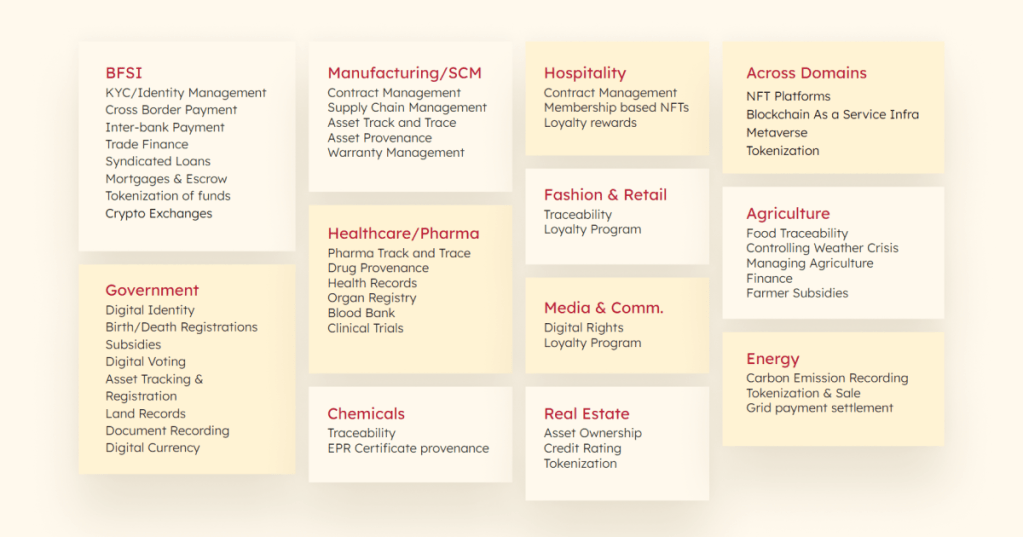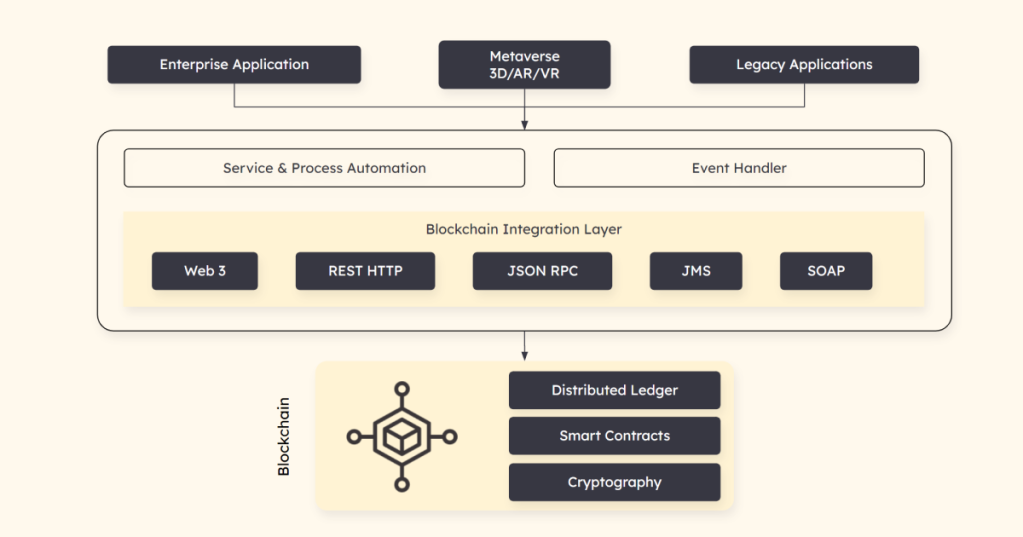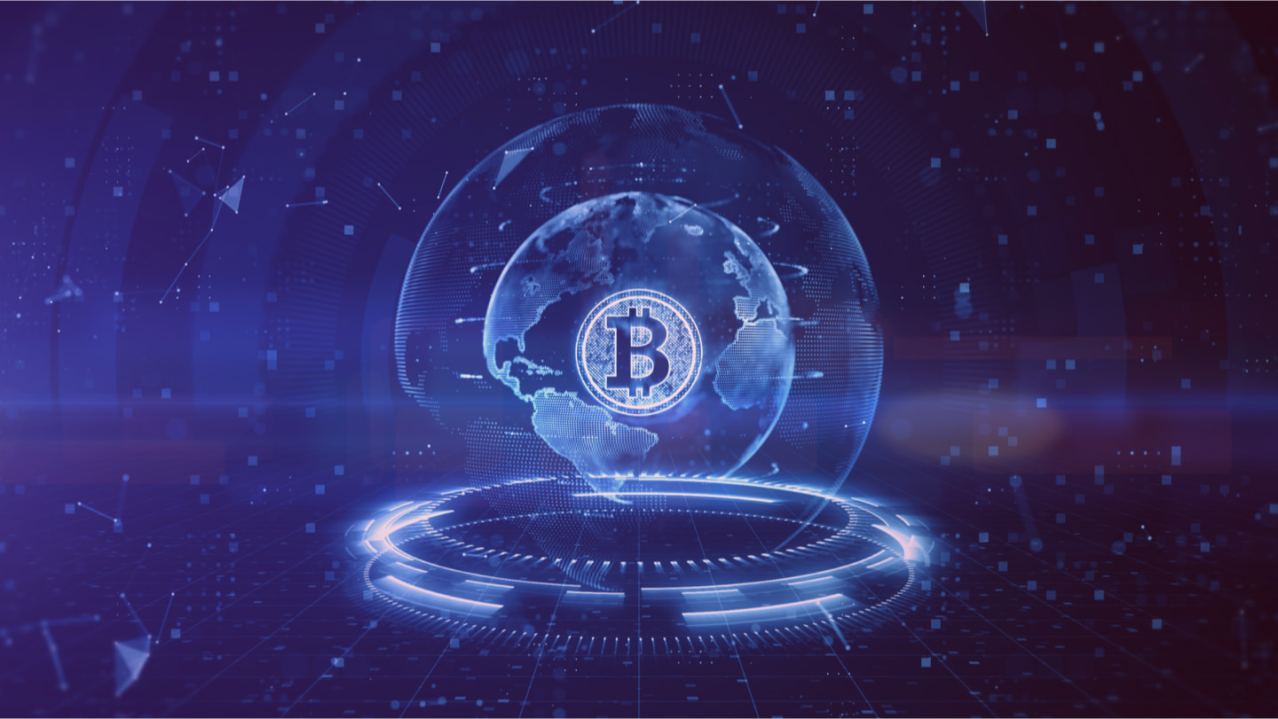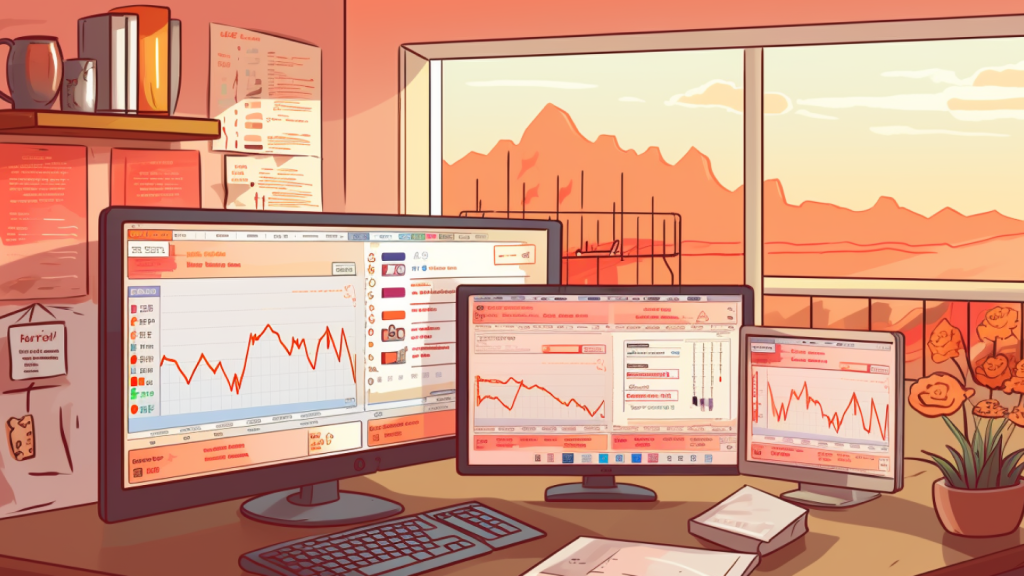Blockchain integration in application modernization: Beyond cryptocurrencies
Did you know that according to new research on market trend analysis, the global blockchain market size is poised to generate revenue of over $94 billion by the end of 2027, projecting a CAGR of around 66.2%?
Keeping in mind that successful examples often pave the way for innovation and transformation, let us start this blog with a real world example. In a recent project, our team set out to digitally fractionalize commercial properties, enabling co-ownership through the utilization of ERC-721 NFTs on the Ethereum blockchain.
We successfully created a web-based platform that streamlined the onboarding of clients, property listings, and the management of post-purchase processes. Customers could commit to purchasing fractions of commercial real estate, facilitated by an admin panel that created ERC-721 tokens on the Polygon blockchain. An admin wallet securely held all tokens and facilitated transfers as fractions were sold.
Working on this project gave us the opportunity to use blockchain integration to breathe new life into a legacy application. By embracing the power of ERC-721 NFTs on Ethereum, the platform not only transformed the real estate industry but also showcased the potential for blockchain to enhance operational efficiency, engage users, and provide a secure and transparent framework for modern applications.
As we delve deeper into the blog, we will explore the broader implications and strategies for integrating blockchain in the process of application modernization.
Understanding application modernization and blockchain
Let us first understand what application modernization and blockchain mean.
Application modernization is essentially the process of revamping and enhancing existing software applications to align seamlessly with the demands of today’s business landscape.
Legacy applications, though groundbreaking in their time, now grapple with a set of challenges. Outdated infrastructure, security vulnerabilities, and compatibility issues have become roadblocks hindering agility and stifling innovation. Consequently, actively exploring strategies for modernization to keep up with competitors is the need of the hour.
According to Foundry’s State of The CIO Study 2023, modernizing applications and infrastructures remains the third-highest initiative for Chief Information Officers (CIOs).
When we talk about the blockchain, it is more accurately a protocol that describes a specific way of packaging and structuring data in a ledger. So, in a blockchain, all the transactions written to the ledger are secured through cryptography. Over time, the transaction history gets locked into blocks of data that are cryptographically chained together and secured to make an immutable record of these transactions that is impossible to forge.
When we have a decentralized ledger put into place, there’s no central authority controlling it. Rather, everyone who is part of the system shares and controls the information that is stored. So, what this means in practical terms is that if you’re participating in this network, you don’t need to trust a middleman to handle your transactions; you can transact directly with other participants in the network without needing to raise questions of trust.
The need for blockchain integration for application modernization
Blockchain integration is a novel solution offering unique features and advantages. Its decentralized nature reduces reliance on central authorities, mitigating scalability and fault tolerance issues.
To give an example, in a project that we worked on, we addressed challenges in the recycling industry. The client faced issues with tracking the recycling process. We developed a blockchain-enabled web platform and mobile app for easy tracing, implemented Hyperledger Fabric 2.0, and geo-tagged bales. The solution ensured transparent reporting to compliance authorities, prevented certificate fraud, and integrated seamlessly with the client’s ERP for efficient transportation documentation.
This project is an example of how blockchain can revolutionize processes and enhance overall accountability and traceability in a complex industry. The successful integration of blockchain into the application framework attests to its capability of modernizing traditional systems for increased efficiency, transparency, and security.
Use cases of blockchain integration in application modernization

Here are a few of the ways businesses can leverage blockchain for app modernization:
Smart contracts
You may have heard of the term smart contracts before. Implementing smart contracts on the blockchain can automate and streamline various business processes, such as insurance claims, property transfers, and compliance tracking. It eliminates intermediaries, enabling businesses to modernize operations, reduce paperwork, and shorten processing time, thereby mitigating the risk of errors and delays.
Financial transactions and remittances
Blockchain is a boon for traditional payment and remittance systems as it can make transactions more secure as well as faster and cheaper. Cross-border payments, especially, can be significantly simplified as this technology eliminates the need for intermediaries and reduces transaction fees and settlement times.
Healthcare
Healthcare providers can leverage blockchain to store their patients’ medical records securely. When a medical record is generated and signed, it can be written into the blockchain, which provides patients with proof and confidence that the record cannot be changed. These personal health records could be encoded and stored on the blockchain with a private key.
Supply chain
Suppliers can use blockchain to record the origins of materials that they have purchased. IBM Food Trust is a good example where suppliers are using blockchain to record the origins of materials that they have purchased. This allows companies to verify the authenticity of not only their products but also common labels such as “Organic,” “Local,” and “Fair Trade.”
The InfoBeans way – How we integrate blockchain to transform legacy apps

At InfoBeans, we enable existing applications to work with enterprise blockchain architecture seamlessly, via our Blockchain Integration Layer. As shown in the figure above, our Blockchain Integration Layer consists of Web3, REST HTTP, JSON RPC, JMS (Java Message Service) and SOAP (Simple Object Access Protocol). We use these APIs to create blockchain-enabled solutions like distributed ledger, smart contracts, cryptography, etc.
Final thoughts
The transformative power of blockchain in application modernization is undeniable. From enhanced security to decentralized architectures and smart contracts, blockchain brings a myriad of advantages to the table.
Not to mention the competitive advantage it can give you with investors. Investors are often drawn to companies that have the potential to revolutionize traditional business models and unlock new opportunities while maintaining a commitment to system integrity, transparency, and immutability.
As businesses navigate the evolving landscape of technology, embracing blockchain integration becomes a strategic imperative for sustained innovation. The journey towards modernization is not just a technological evolution but a narrative of innovation, collaboration, and adaptability.










